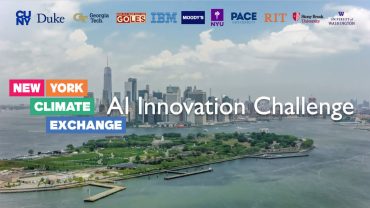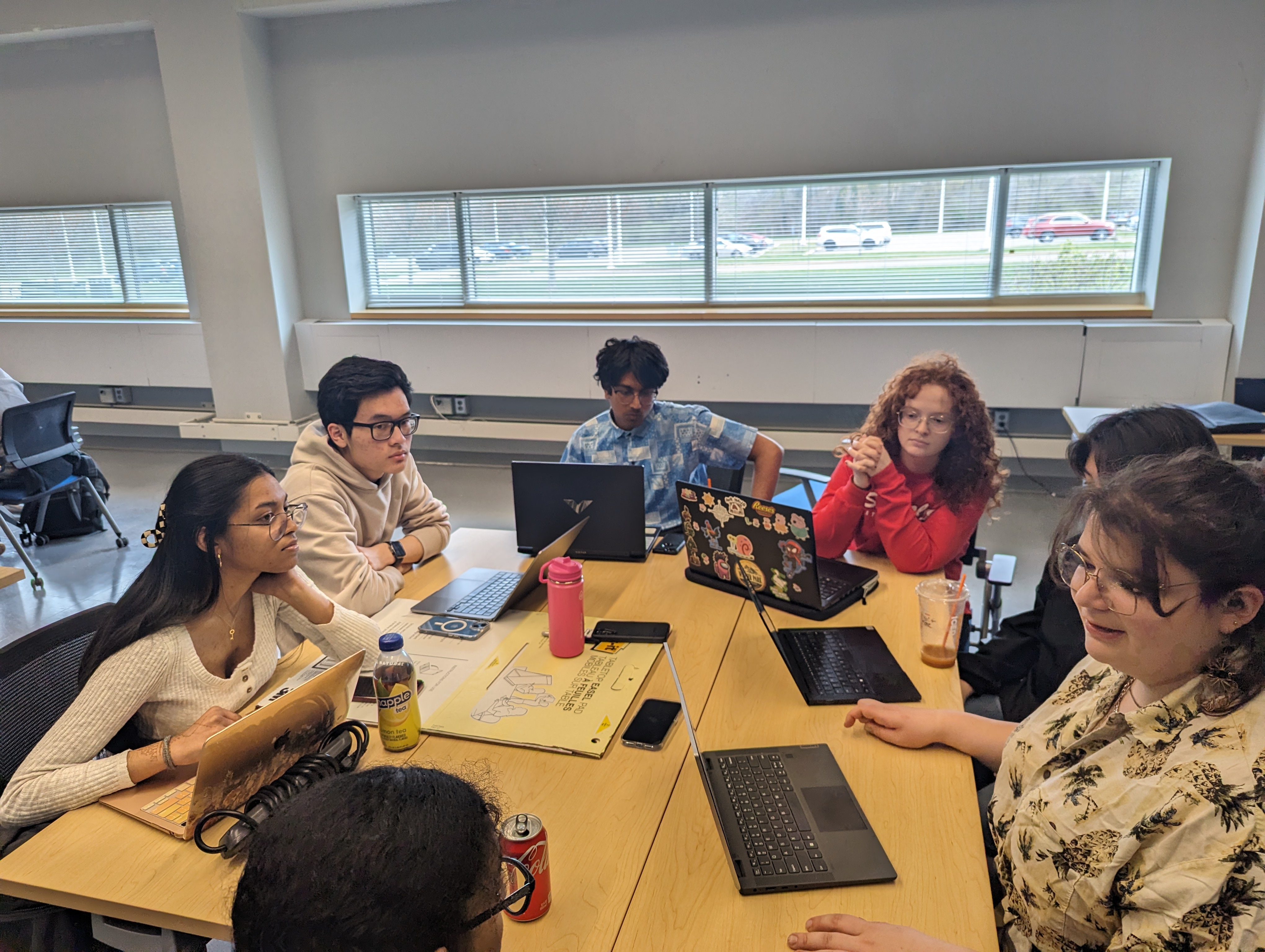Stony Brook Team Makes Finals of First-Ever Climate Exchange Innovation Challenge
Students will develop cutting-edge solutions for NYC stormwater management
 In 2023, Stony Brook University was named an anchor institution of The New York Climate
Exchange, a world-leading climate solutions center with a future home on Governors Island in the city’s harbor.
In 2023, Stony Brook University was named an anchor institution of The New York Climate
Exchange, a world-leading climate solutions center with a future home on Governors Island in the city’s harbor.
In April, Stony Brook students were invited to compete in the first-ever Climate Exchange AI Innovation Challenge, where teams from eight universities presented cutting-edge solutions to stormwater management challenges faced by New York City. As a result of their strong performance, one Stony Brook team has been invited to compete in the finals — graduate students Caroline Fabian, Nathan Hirtle, Ian Maywar and Harmanveer Singh.
“The New York Climate Exchange has been brainstorming for over a year the unique ways to leverage this new partnership among academic, community, corporate, and government institutions,” said Kevin Reed, associate provost for Climate and Sustainability Programming at Stony Brook and chief climate scientist at The Exchange. “The AI Innovation Challenge is a result of these discussions, and it brings together student ingenuity with corporate tools to address one of New York City’s most pressing climate challenges: managing stormwater flooding.”
Under the guidelines of the competition, students will develop stormwater management solutions using IBM® watsonx.ai™ technology and the Call for Code platform, Moody’s insights and datasets, and GOLES’ community touchpoints. IBM is also one of the Climate Exchange’s anchor institutions.
 More than 50 Stony Brook students initially took part in projects as part of the Climate
Exchange AI Innovation Challenge.
|
“New York City, and many cities around the world, are experiencing the impacts of climate change through increasing rainfall amounts, particularly during extreme events,” said Reed. “When you combine this with aging infrastructure systems, the challenge becomes urgent. However, like most climate impacts the challenge is complex and new ways of thinking are needed to develop potential solutions. And that is where our students come in.”
“I am really excited to see the ways in which this challenge intersects Stony Brook’s strengths in climate-related research and AI,” said Carl Lejuez, provost and executive vice president at Stony Brook. “The need for innovative solutions and creative thinking across climate impacts is enormous, and it is no surprise to see Stony Brook students leading the way. This challenge is one of many dynamic opportunities made possible thanks to our leadership in the New York Climate Exchange.”
The competition’s first phase kicked off in April, taking place online. Reed and Rong Zhao, center director of the Center of Excellence in Wireless and Information Technology (CEWIT), led the Stony Brook effort. After a kickoff meeting, more than 50 Stony Brook students worked on projects addressing stormwater challenges faced by urban and coastal communities in New York and other metropolitan areas.
All-day events took place on two consecutive Fridays, giving students a chance to get valuable guidance, advice, and feedback from a team of mentors comprising faculty from the School of Marine and Atmospheric Science (SoMAS), the College of Business, and the College of Engineering and Applied Sciences, as well as representatives of industry partners and The Exchange.
Mentors couldn’t communicate with participants other than the activities that took place on those two Fridays. A representative of architecture and engineering company H2M gave a talk, and Stony Brook organized a webinar for participants to learn about the stormwater and sewage water challenges faced by New York City and similar municipalities. Stony Brook’s programming was offered to all the universities involved, giving those students access to Stony Brook expertise, an example of the outreach designed to facilitate a cooperative effort to address an ever more important global challenge.
 The New York Climate Exchange will be a first-of-its-kind international center for
developing dynamic solutions to the global climate crisis.
|
“I am inspired to see students deeply committed to addressing real-world issues and fostering sustainability,” said Dominique Lee, mentor for the Climate Exchange. “The recent severe storms and floods across various states in the US and the world emphasize the critical nature of water management and serve as a wake-up call for the urgent need for their enthusiasm and innovation. The Exchange’s first event has laid the foundation for a promising movement towards climate action, innovation, and solutions. Driven by the intellect and creativity of university students who grasp the importance of preserving our surroundings, both locally in New York and globally, this initiative holds great promise.”
At the completion of Phase 1, the top five teams were selected to go into the final round. Finalists include two teams from Pace University, two teams from Georgia Tech and the Stony Brook team.
“We need to work with watsonx.ai, which is a platform that uses large language models alongside other machine learning technologies,” said Maywar, a master’s student in Stony Brook’s marine sciences program. “Our idea is to leverage 311 calls as a dataset to train large language models to develop a pathfinding algorithm to divert people who are trying to get from point A to point B using map software to divert them away from areas that are prone to flooding in a flooding event. It’s exciting to be working on a project like this.”
The second phase officially starts August 1, and will carry through summer and into the fall. The final presentations are scheduled to take place the last weekend of October in New York City.
“I am confident that our students, in collaboration with The Exchange partners, are going to uncover innovative approaches to stormwater management,” said Reed. “I am sure we are going to see some of these solutions in action in the future.”
